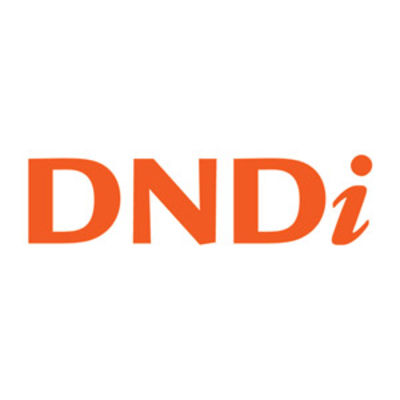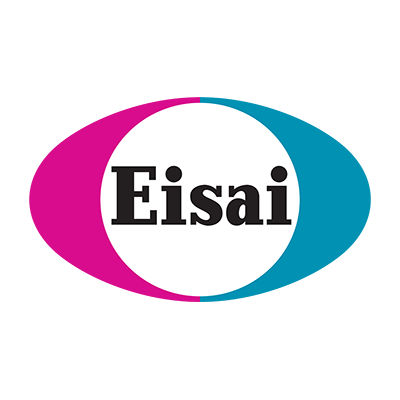预约演示
更新于:2025-05-07
Mycetoma
足分支菌病
更新于:2025-05-07
基本信息
别名 MYCETOMA、Madura foot、Mycetoma + [27] |
简介 A chronic progressive subcutaneous infection caused by species of fungi (eumycetoma), or actinomycetes (actinomycetoma). It is characterized by tumefaction, abscesses, and tumor-like granules representing microcolonies of pathogens, such as MADURELLA fungi and bacteria ACTINOMYCETES, with different grain colors. |
关联
2
项与 足分支菌病 相关的药物靶点 |
作用机制 CYP51A1抑制剂 |
原研机构 |
非在研适应症 |
最高研发阶段批准上市 |
首次获批国家/地区 日本 |
首次获批日期2018-01-19 |
作用机制 fungal CYP51A1抑制剂 |
最高研发阶段批准上市 |
首次获批国家/地区 欧盟 [+3] |
首次获批日期2005-10-25 |
7
项与 足分支菌病 相关的临床试验NCT06512714
Estimating the Burden of Mycetoma: A Retrospective Analysis of Hospital Records
The goal of this retrospective observational study is to describe mycetoma cases detected in health care facilities in India and Senegal in a 10-year period. The main objectives are to:
* Determine the number of mycetoma cases diagnosed per year and trends over time.
* Describe characteristics of diagnosed mycetoma cases.
1. Describe demographic characteristics of patients with mycetoma.
2. Describe clinical characteristics of patients with mycetoma upon initial presentation and over time.
* Assess etiology of mycetoma cases.
* Characterize clinical management of mycetoma cases.
1. Characterize approaches to diagnosis of mycetoma.
2. Investigate types and durations of treatments (including medical and surgical approaches) utilized to treat mycetoma cases.
3. Describe clinical outcomes among patients with mycetoma.
The study team will review all available medical, laboratory and radiologic records of identified mycetoma cases and use data collection forms to extract relevant data.
* Determine the number of mycetoma cases diagnosed per year and trends over time.
* Describe characteristics of diagnosed mycetoma cases.
1. Describe demographic characteristics of patients with mycetoma.
2. Describe clinical characteristics of patients with mycetoma upon initial presentation and over time.
* Assess etiology of mycetoma cases.
* Characterize clinical management of mycetoma cases.
1. Characterize approaches to diagnosis of mycetoma.
2. Investigate types and durations of treatments (including medical and surgical approaches) utilized to treat mycetoma cases.
3. Describe clinical outcomes among patients with mycetoma.
The study team will review all available medical, laboratory and radiologic records of identified mycetoma cases and use data collection forms to extract relevant data.
开始日期2024-06-20 |
申办/合作机构 |
NCT06523998
Retrospective Descriptive Observational Study of the Epidemiological, Clinical and Therapeutic Profile of Patients With Rare Infections of Dermatological Interest at Three Major Reference Hospitals in Costa Rica From 2019-2023
In Costa Rica there are some descriptive studies of some of these rare infectious diseases (sporotrichosis, chromomycosis and mycetomas); however, there are no recent published reports. Most of the publications on the subject date back to the previous century; from 2000 to the present year there are only publications of small series of cases, so the current behavior of these skin infections is unknown. The primary objective is to analyze the epidemiological, clinical, and therapeutic profile and determine the risk factors in patients with a diagnosis of rare infections of dermatological interest treated at Hospital México, Hospital Rafael Calderón Guardia, and Hospital San Juan de Dios during the period 2019-2023.
开始日期2023-12-11 |
申办/合作机构- |
JPRN-UMIN000051053
Primary Mycetoma of The Calcaneum - Primary Mycetoma of The Calcaneum
开始日期2023-09-16 |
100 项与 足分支菌病 相关的临床结果
登录后查看更多信息
100 项与 足分支菌病 相关的转化医学
登录后查看更多信息
0 项与 足分支菌病 相关的专利(医药)
登录后查看更多信息
1,942
项与 足分支菌病 相关的文献(医药)2025-07-01·International Journal of Antimicrobial Agents
Posaconazole effectiveness in rare invasive fungal infections: A systematic literature review
Review
作者: Campbell, Havilland ; Simon, Alyssa ; Cossrow, Nicole ; Waskin, Hetty ; Patel, Dipen ; Bernauer, Mark ; Kaminski, Allysen
2025-07-01·Microbial Pathogenesis
Immune response in BALB/c mice to an attenuated strain of Nocardia brasiliensis
Article
作者: Vera-Cabrera, Lucio ; Vázquez-Marmolejo, Anna V ; Flores-Aldaba, Kevin A ; Cantú-Álvarez, Mayra G ; Salinas-Carmona, Mario C ; Ocampo-Candiani, Jorge ; Vargas-Villarreal, Javier ; Espinoza-Martínez, Pablo E
2025-04-02·The American Journal of Tropical Medicine and Hygiene
The First Autochthonous Case of Actinomycetoma in a Bedouin Patient in the Israeli Negev Region
Article
作者: Grupel, Daniel ; Samueli, Benzion ; Shafat, Tali ; Haber, Meital
9
项与 足分支菌病 相关的新闻(医药)2025-02-20
·药筛
今天继续推荐关注品种:磷酸芦可替尼片。
原研全球市场销售一路高歌猛进,2024年超过50亿美元,还有增长潜力。
国内市场,原研诺华2017年进口,2019年进入医保目录,目前独家在售。
医院市场年销售额超过5亿,加上院外市场,总规模约10亿元。
原研国内核心专利2026年到期,国内已有多个企业申报仿制。成都苑东首家报产获批上市,但不能上市销售。
正大天晴、重庆华森等,多个企业申报,竞争激烈
以下是产品简介,由摩熵医药AI生成。磷酸芦可替尼片(Ruxolitinib Phosphate)详细分析一、药物基本信息
通用名:磷酸芦可替尼(Ruxolitinib Phosphate)
商品名:捷恪卫(Jakavi,美国商品名Jakafi)
靶点:JAK1/JAK2抑制剂(选择性抑制Janus激酶通路)
适应症:
中高危骨髓纤维化(MF);真性红细胞增多症(PV)对羟基脲耐药或不耐受;急性移植物抗宿主病(GVHD);特应性皮炎(部分国家获批)
研发公司:由Incyte Corporation研发,诺华(Novartis)负责美国以外市场商业化。二、作用机制与药理学特点
JAK-STAT通路抑制:
芦可替尼通过抑制JAK1和JAK2激酶,阻断促炎细胞因子(如IL-6、IFN-γ)和促增殖信号(如EPO、TPO)的传导。
在骨髓纤维化中,抑制异常活化的JAK2 V617F突变信号,减少炎症因子释放和髓外造血。
选择性优势:
对JAK2的选择性高于JAK3(避免过度免疫抑制),但对JAK1的抑制可能增加感染风险。三、药代动力学(PK/PD)
吸收:口服生物利用度约95%,达峰时间1-2小时,食物对吸收无显著影响。
代谢:主要经CYP3A4代谢,次要经CYP2C9。
半衰期:约3小时,需每日两次给药。
排泄:74%经尿液(主要为代谢物),22%经粪便。
特殊人群:肝肾功能不全者需调整剂量(如Child-Pugh B/C患者剂量减半)。四、临床疗效数据
骨髓纤维化(MF):
41.9%患者脾脏体积缩小≥35%(vs. 0.7%安慰剂组);
45.9%患者总症状评分改善≥50%(vs. 5.3%安慰剂组)。
COMFORT-I/II试验(III期):
生存获益:5年随访显示芦可替尼组生存期显著延长(HR=0.69)。
真性红细胞增多症(PV):
21%患者达到完全血液学缓解(vs. 1%对照组);
60%患者无需放血治疗(vs. 20%对照组)。
RESPONSE试验:
GVHD:
REACH试验:芦可替尼治疗激素难治性急性GVHD,总缓解率(ORR)达57%。五、安全性及不良反应
常见不良反应:
血液系统:贫血(44%)、血小板减少(38%)、中性粒细胞减少(16%)。
感染:带状疱疹(7%)、尿路感染(10%)。
其他:头晕、头痛、血脂升高。
黑框警告:
严重感染(结核、真菌、细菌性肺炎等);
恶性肿瘤风险(如淋巴瘤、非黑色素瘤皮肤癌);
血栓事件(深静脉血栓、肺栓塞)。六、药物政策与市场表现
国内现状:
2017年在中国获批骨髓纤维化适应症,2020年进入国家医保(乙类)。
价格:约500元/5mg/片(医保后自付比例约30%)。
全球市场:
2022年全球销售额:Jakafi(美国)20.3亿美元,Jakavi(海外)14.6亿美元。
核心竞争产品:Fedratinib(JAK2抑制剂)、Momelotinib(JAK1/2/ACVR1抑制剂)。七、研发进展与未来方向
适应症拓展:
白癜风:III期试验显示52周后面部复色率≥75%的患者达30%;
特应性皮炎:欧盟已批准,美国处于III期临床。
联合疗法:
与BCL-2抑制剂(Venetoclax)联用探索骨髓纤维化治疗;与PD-1抑制剂联用于实体瘤(早期临床)。
用摩熵药筛小程序,快速查询产品申报进展!
专利到期临床3期
2025-02-18
·戊戌数据
一、品种概述
1、基本情况
国内:夫西地酸乳膏主要用于葡萄球菌、链球菌、痤疮丙酸杆菌、极小棒状杆菌及其他对夫西地酸敏感的细菌引起的皮肤感染,包括疱疮、疖、痈、甲沟炎、毛囊炎、寻常性痤疮等。目前市售的夫西地酸乳膏主要有两个规格:15g:0.3g和5g:0.1g(以C₃₁H₄₈O₆计算)。包含原研企业在内,目前共有5家企业持有夫西地酸乳膏的上市批文。该品种为处方药,以化药4类进行注册申报,夫西地酸乳膏已被收录于2024年国家医保目录乙类,暂未被纳入国家集采。
国外:夫西地酸乳膏(商品名:Fucidin/立思丁)是丹麦LEO Pharma A/S的原研产品,立思丁于1999年获批在中国上市销售。目前夫西地酸乳膏已在欧洲多个国家上市。
2、作用机制和优势
作用机制:通过抑制细菌蛋白质合成来发挥抗菌效果。它能与延伸因子G(EF-G)结合,阻止EF-G二磷酸鸟苷复合物的释放,从而使蛋白质合成停滞。
优势:
(1)具备抗菌和免疫调节双重作用。
(2)皮肤渗透性强,能深入皮肤底层消除感染,对深部细菌感染的皮肤疾病具有一定优势。
(3)因其良好的临床效果和安全性,在皮肤科和外科领域被广泛用作局部抗菌药膏。
(4)不与其他抗菌药物产生交叉耐药性。
(5)权威指南推荐的痤疮一线联合用药。
3、专利情况
中国上市药品专利数据库中暂无关于夫西地酸乳膏的相关数据。
4、国内上市情况
目前持有夫西地酸乳膏上市批件的企业共有5家。
图:夫西地酸乳膏的国内上市情况
5、国内注册情况
目前共16家企业进行了夫西地酸乳膏的上市申请,均暂未获得批准。
表:夫西地酸乳膏的国内注册情况(ANDA)
6、临床试验情况
夫西地酸乳膏可豁免BE,无需开展BE试验。
二、市场可行性分析
1、适应症及流行病学
感染性皮肤病:皮肤病种类繁多,皮肤病种类繁多,大约有1000多种。而在皮肤病中,由微生物感染所致的皮肤病最常见。它可以是细菌感染,如脓胞疮,由金黄色葡萄球菌和/或溶血性链球菌所致;或是病毒感染,如单纯疱疹由单纯疱疹病毒引起;或真菌性的,如手、足癣,或是寄生虫感染,如疥疮,由疥螨引起的接触性传染性皮肤病。
寻常痤疮(痤疮):又称“青春痘”,是一种累及毛囊皮脂腺的慢性炎症性皮肤病,好发于面部及前胸、后背,临床上主要表现为粉刺、丘疹、脓疱、囊肿或结节,常伴有毛孔粗大和皮脂溢出。目前认为寻常痤疮发病主要与雄激素诱导皮脂腺肥大过度分泌皮脂;毛囊导管口异常角化;痤疮丙酸杆菌、金黄色葡萄球菌、马拉色菌等微生物增殖以及免疫炎症反应有关。
痤疮的流行病学:寻常痤疮好发于青春期男女,已成为全球第八大慢性疾病。(1)全球患病率较高,好发于年轻人群:皮尔法伯实验室的数据显示,全球痤疮患病率为20.5%;在青少年/年轻人(16/24岁)群体中这一比例最高,达到28.3%,在25至39岁的成年人群体中也保持较高水平,为19.3%;一般来说,女性(23.6%)比男性(17.5%)更容易患有痤疮。(2)中国痤疮患病人数规模庞大,好发于青少年及年轻成年人:根据《中国痤疮治疗指南(2019修订版)》,中国人群截面统计痤疮发病率为8.1%,但超过95%的人会有不同程度痤疮发生,这意味着理论上2023年中国患有痤疮的人群高达1.15亿人次。根据《寻常痤疮基层诊疗指南(2023年)》,寻常痤疮好发于青春期男女,寻常痤疮在青少年发病率高达93%。
2、寻常痤疮的治疗
中外痤疮指南均指出痤疮临床分级是治疗的基础,外用抗菌药物是治疗痤疮的重要手段,推荐外用抗菌药物联合其他治疗方案用于中重度痤疮(避免单独使用)。具有抗痤疮丙酸杆菌和抗炎作用的抗菌药物均可用于寻常痤疮的治疗,包括林可霉素和夫西地酸等。外用抗生素最主要的问题就是耐药,需注意不能长期使用。
表:同类型药物(针对痤疮的外用抗菌药物)的比较
3、全球痤疮治疗市场情况
根据Global Market Insights分析,全球痤疮治疗药物市场将从2022年的99亿美元增长至2032年的175亿美元,CAGR达5.86%,全球痤疮治疗药物市场将在新产品渗透率提升的作用下稳步扩张。
4、国内痤疮治疗市场情况
参考《玫瑰痤疮真实世界诊疗现状调查分析》中“轻症患者系统用药率达72.2%”,根据玫瑰痤疮相对寻常痤疮更为严重的症状,假设成人痤疮轻/中/重度患者治疗率分别为10%/40%/70%,根据治疗指南推荐的疗法,假设轻/中/重度患者治疗费用分别为20/100/1000元,假设青少年痤疮轻/中/重度患者治疗率分别为5%/20%/50%(支付能力和社交需求较低),治疗费用分别为20/50/800元。据此测算国内痤疮治疗市场规模将从2024年的42亿元增长至2027年的81亿元,与弗若斯特沙利文的测算结果近似。
图:国内痤疮治疗市场规模(弗若斯特沙利文测算)
资料来源:弗若斯特沙利文,太平洋证券研究院整理
5、夫西地酸国内市场情况
夫西地酸的制剂主要有夫西地酸乳膏(2024年市场占有率最高,88.63%)、注射用夫西地酸钠(4.92%)、夫西地酸钠软膏(3.62%)、夫西地酸滴眼液、夫西地酸口服混悬液。夫西地酸2020年-2024年市场规模处于一个波动的趋势,2022年有小幅的下降,而2021年和2023年市场规模是增长的,但到了2024年,又有了明显的下降。2023年市场规模达到了约4.05亿元,2024年为2.05亿元。
数据来源:米内网
夫西地酸乳膏的市场整体趋势和夫西地酸的基本保持一致,2020年-2024年市场规模处于一个波动的趋势,2022年有小幅的下降,而2021年和2023年是增长的。受医药寒冬的影响,到了2024年,其市场规模有了一定的下降,2023年夫西地酸乳膏的市场规模达到了约9939万元,2024年为6019万元。从市场份额来看,澳美制药市场占有率最高(66.46%),原研LEO(利奥)的市场份额为33.18%;从销售终端来看,医院端占据绝大部分(公立医院占比为77.97%),零售端占比仅为19.36%。注:福元药业仅2024年有64万元的销售额,其余持证企业并未查询到有相关销售额。
虽然2024年夫西地酸乳膏的市场规模有了一定的下降,但由于其自身具有一定优势(痤疮一线联合用药、无交叉耐药性、对深部细菌感染有效等),在加上国内痤疮患者规模庞大,患者对治疗的需求大,未来夫西地酸乳膏的市场规模是有较大可能实现持续增长。
数据来源:米内网
END
★
点击下方卡片,发现更多精彩
上市批准
2024-02-28
和BioBAY园内大多数企业不同,苏州高迈药业有限公司聚焦于经皮给药领域,做具有“轻医美类、消费属性的药品”。高迈药业从零起步,局麻产品利丙双卡因乳膏获批;痤疮产品阿达帕林凝胶、过氧苯甲酰凝胶;抗感染产品夫西地酸乳膏成功申报;在经皮给药领域的一致性评价研究走在了行业前列。今天就让我们一起聆听BioBAY园内企业高迈药业是如何打造外用药行业金标准!创业初心:推动国内外用药的高质量发展高迈药业成立的初衷说起来也很有意思,其中一位股东旅居日本二十余年,经常应亲友要求带回一些日本产的化妆品和贴膏,这位股东和高迈药业创始人陈学明聊起来,“日本的外用药非常受国内用户的肯定,我们也可以在这个领域做点事情。2018年8月8日,高迈药业成立了。和大多数押注肿瘤治疗、自身免疫性疾病治疗等热门赛道的创新型biotech企业不同,高迈药业专注于外用药的仿制药研发(一致性评价),在疼痛、痤疮、真菌、黄褐斑等适应症布局了全系列的产品。谈及创业历程,陈学明坦言:“我觉得做企业最重要的是技术、是质量、是全产业链管控。为了做好外用药的一致性评价,解决体外透皮的难题,我们自建了动物饲养基地,保证皮肤的质量;同时建了BSL2类生物实验室,可以使用离体皮肤,拥有自己的“皮肤银行”。深耕经皮给药领域、做细分领域的领头羊,打造外用药第一股2023年高迈药业迎来了第一个项目的获批,2024年计划完成13个项目的申报,未来三年会完成60余个项目的申报。利丙双卡因乳膏,作为一致性过评的品种获批,标志着高迈药业已经打通了外用制剂的整个研发逻辑(外用制剂的一致性评价法规还不明确、不完善),此品种主要用于正常完整皮肤的局部麻醉和生殖器粘膜浅表手术和浸润麻醉的预处理。在公立医院的皮肤科,美容科,美容院等场景销售前景非常好,是一款具有百亿规模的医美类的局麻药品。此外,痤疮类品种阿达帕林凝胶、过氧化苯甲酰凝胶两个项目都是按照一致性评价申报的“首家”,高迈药业正在极力打造具有轻医美类、销售属性的药品。MAH模式打开高迈药业成长空间新型经皮给药领域尚处于发展早期,仿制潮才刚刚开始,包括软膏剂、凝胶剂、乳膏剂、泡沫剂等。当下,我国的化药贴膏也正在逐步替代中成药贴膏,国产贴膏正朝着高端复杂制剂升级,向改良型新药、创新药升级。为什么选择MAH模式去做药学研发?服务好客户,比较重要的一点是急客户所急。对于大部分客户来说,带进度的项目对于争分夺秒抢占市场的客户来说更具有吸引力。二次开发对于客户来说,成功率更有信心和保证。如何在众多仿制药研发企业中厮杀出一条道路?高迈药业用坚持“高端仿制”、“改良型新药”、“自主创新”的三步走战略给出了答案。创立之初,高迈药业便引入日本的技术团队,搭建了国内最早的经皮给药技术平台。目前,高迈药业已建立了涵盖仪器设备、皮肤储备、辅料材料、临床法规在内的一体式经皮给药技术平台,深入布局高端制剂领域,为受托研发业务与自主立项新药项目的持续推进提供支撑。基于强大的经皮给药技术平台,高迈药业自身高效的研发效率缩短了产品的研发周期,降低了产品的成本,大幅提升其上市后的市场竞争力。结语在我国药品集采常态化大环境下,在医药行业的销售模式发生变化的环境下;传统创新药开发投入与风险高,部分靶点同质化竞争严重。外用药的赛道或许是企业差异化发展的方向。高迈药业正在全力打造经皮给药复杂制剂研究的技术平台,为我国外用制剂的高质量发展贡献自己的力量。责编:赵家帅文稿:徐悦审核:任旭推荐阅读人物风采丨典晶生物张金忠:伟大的企业源于使命与价值观人物专访丨此身,此时,此地!启迈医疗创始人张霞玲博士的创业故事人物风采丨美诺医药王亚农:创业15年,做CXO领域的“长跑冠军”
一致性评价
分析
对领域进行一次全面的分析。
登录
或

生物医药百科问答
全新生物医药AI Agent 覆盖科研全链路,让突破性发现快人一步
立即开始免费试用!
智慧芽新药情报库是智慧芽专为生命科学人士构建的基于AI的创新药情报平台,助您全方位提升您的研发与决策效率。
立即开始数据试用!
智慧芽新药库数据也通过智慧芽数据服务平台,以API或者数据包形式对外开放,助您更加充分利用智慧芽新药情报信息。
生物序列数据库
生物药研发创新
免费使用
化学结构数据库
小分子化药研发创新
免费使用

